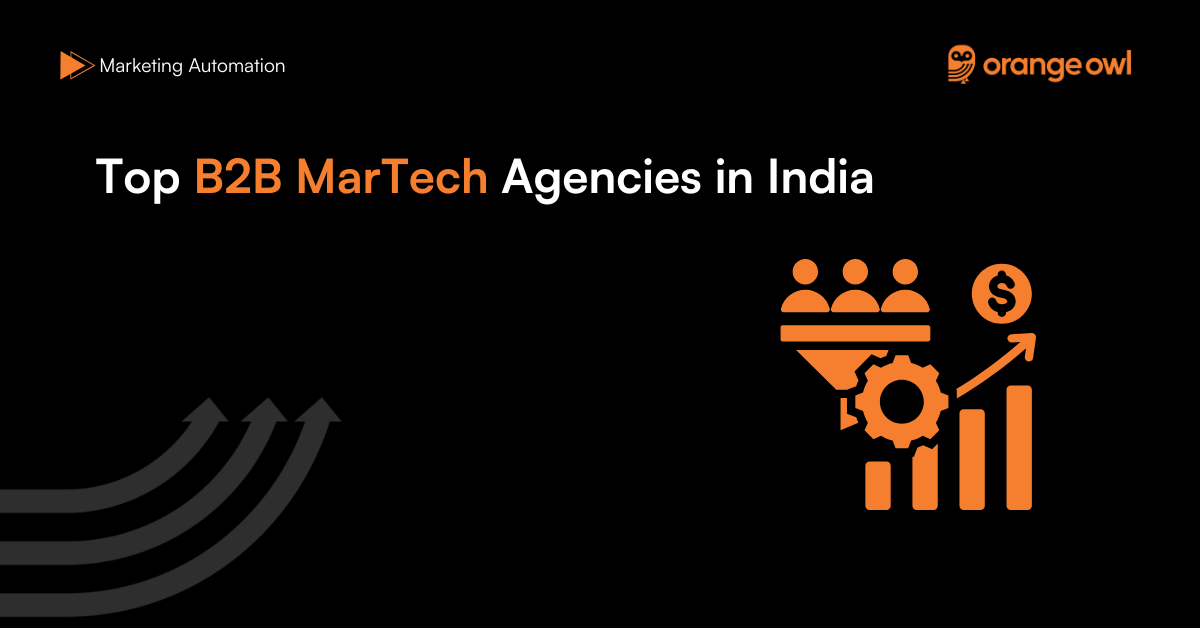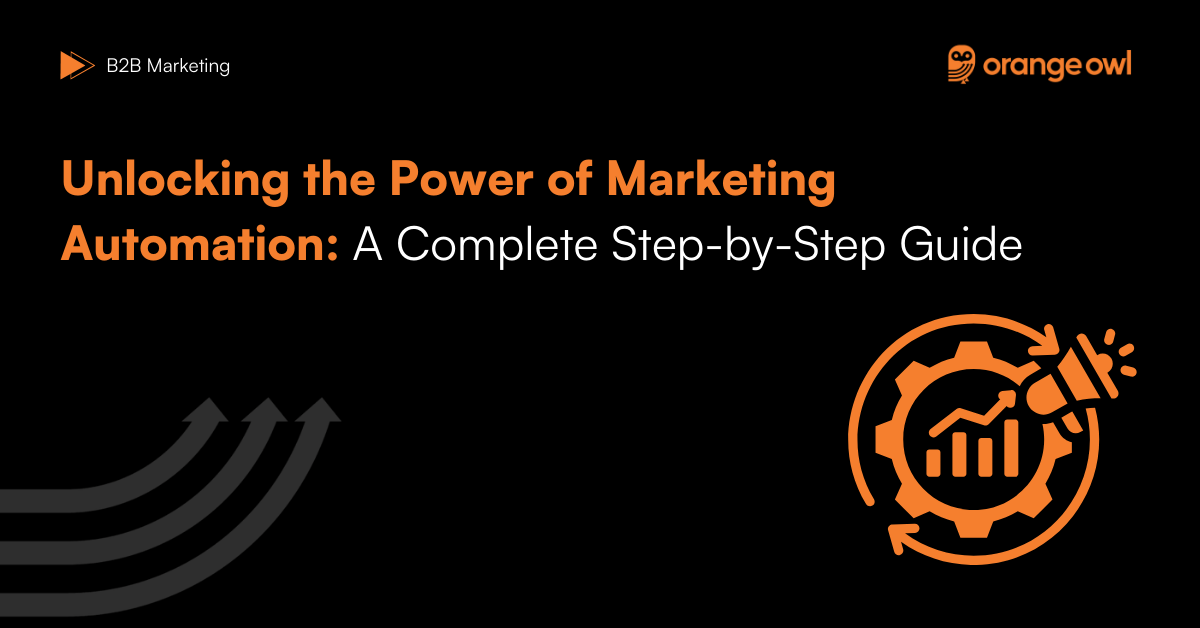Top Marketing Automation Trends and Stats You Must Know in 2025
Orange Owl
January 22, 2025
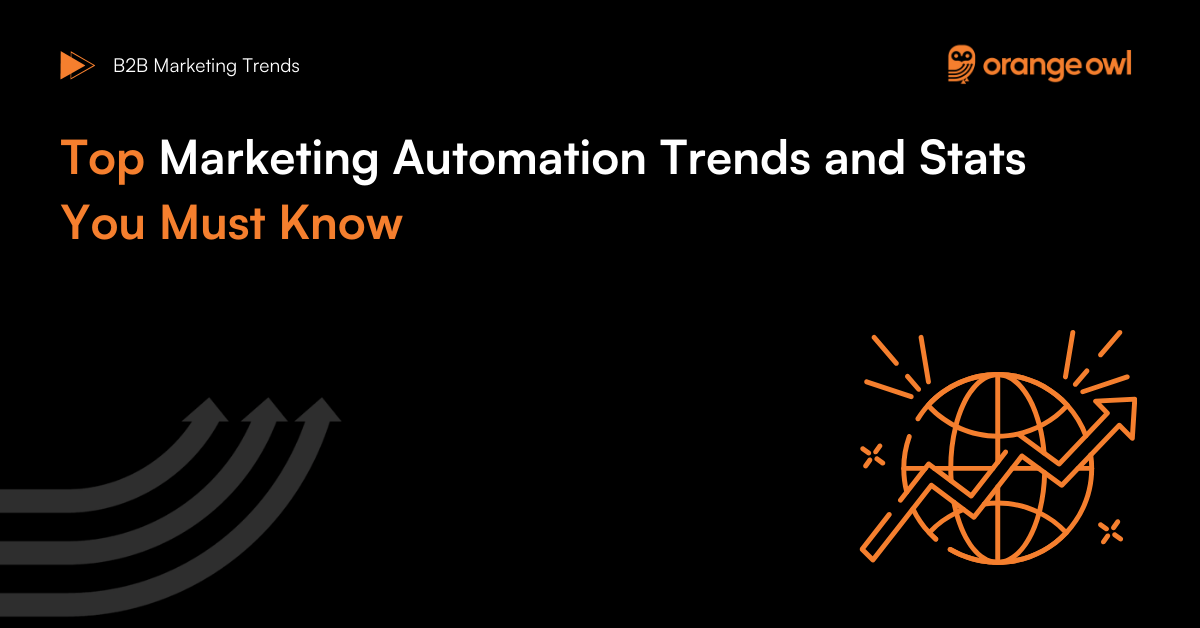
Table of Contents
Have you ever wished for a tireless assistant to handle your repetitive, labor-intensive tasks, allowing you to focus on strategic initiatives? Enter the world of marketing automation trends!
Marketing automation is your answer. It’s a software solution that takes care of marketing tasks without the need for human intervention. Acting as your tireless assistant, marketing automation streamlines tasks and delivers hyper-targeted campaigns. It automatically manages multifunctional campaigns and marketing processes across multiple channels, aligning with the latest marketing automation trends to keep your strategies ahead of the curve.
Why Marketing Automation?
Marketing automation helps in increasing sales productivity and it nurtures prospects into qualified leads. The marketing automation tools target customers with automated messages across web, mail, social, and text which allows companies to focus more on creating creative content.
Benefits of Marketing Automation?
- Generate better leads
- Nurture leads
- Personalize the customer journey
- Better data for decision-making
- Helps to build a complete picture of the customer
We can see that marketing automation has a lot of benefits, so let’s dive into the stats that make it successful.
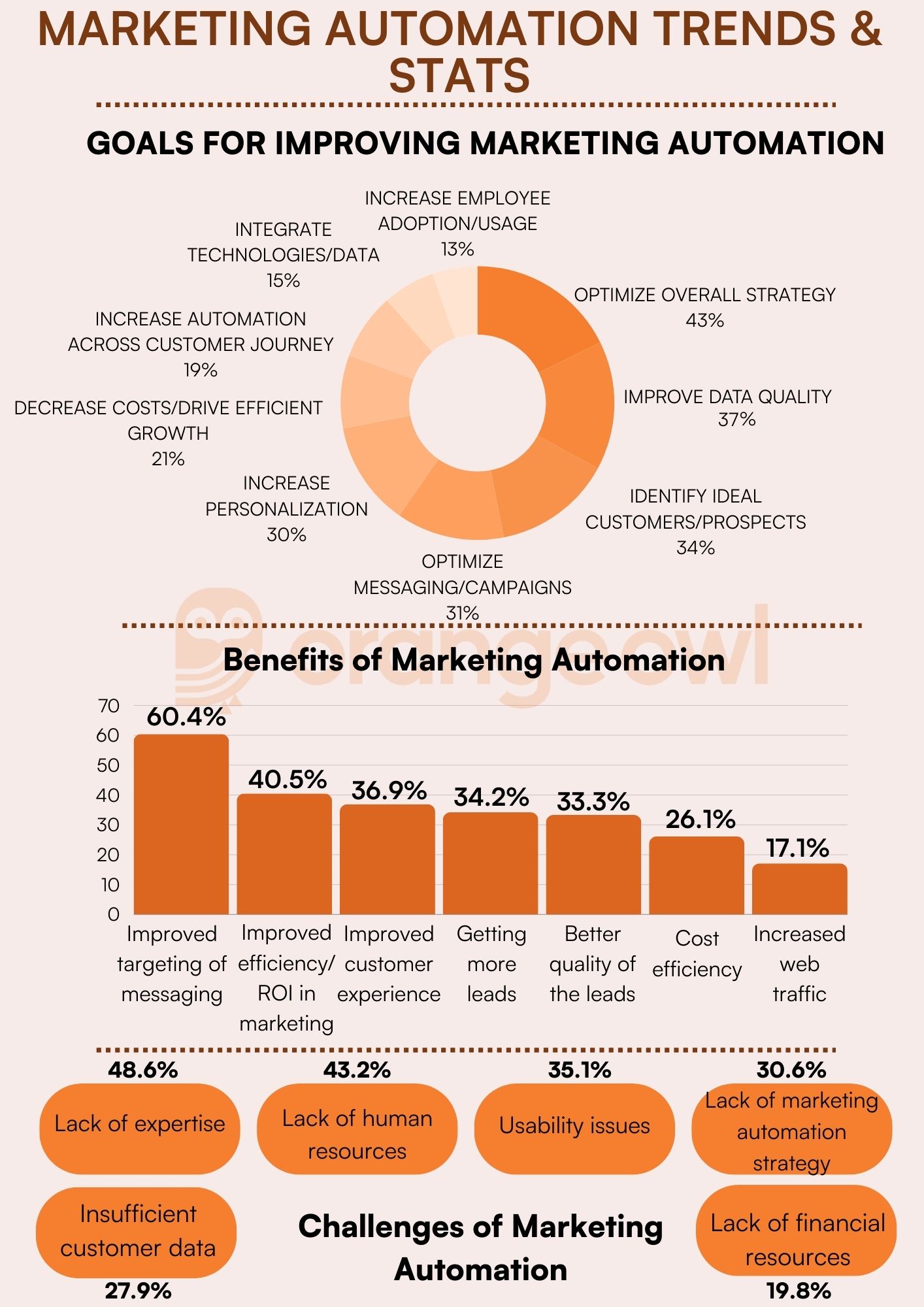
Top Marketing Automation Trends and Stats
- By 2030, the Global Marketing Automation market is set to reach $13.71 million, growing at a CAGR of 12.9% during the forecast period. – Polaris
- Hubspot is leading the marketing automation software market with a 37.5% market share. – Datanyze
- By 2026, global programmatic advertising spending is projected to reach 724.84 billion. – Statista
- The US and Canada dominate programmatic ad spending which accounts for up to 42.3%, while Asia accounts for 35% and Europe accounts for 18%. – Statista
- 91% of companies say that the demand for automation has increased over the last two years. – Salesforce
- 48% of email marketers hope to increase automation in the next 12 months. – MarketingCharts
- Automation is the 3rd most effective email marketing strategy. – HubSpot
- 21% of marketing professionals say that they don’t use automation in their customer journeys. – Ascend2
- According to HubSpot, 18% of companies use automation as their primary email marketing tactic. – HubSpot
- Around 31% of all email orders are automated emails. – Omnisend
- 55% of email marketers use automation, especially for onboarding and post-purchase emails. – Litmus
- Birthdays, anniversaries, and other milestones take the top spot in terms of single automated emails (48%). – Litmus
General Marketing Automation Stats
- Around 76% of businesses use Marketing Automation. – HubSpot
- Marketing teams are using automation software 76% more than sales teams. – HubSpot
- 66% of marketing professionals agree that marketing automation is somewhat successful in achieving marketing objectives. – Ascend2
- 43% of marketers agree that the primary goal for improving marketing automation is to Optimize overall strategy. While 37% of them want to improve data quality and 4% want to identify ideal customers. – Ascend2
- 63% of marketers use marketing automation in email marketing and 50% in social media management. – Ascend2
- 53% of marketers somewhat agree that the marketing automation platform makes it easy to build effective customer journeys. – Ascend2
- Only 8% of marketers strongly disagree that marketing automation platforms are not useful in building effective customer journeys. – Ascend2
- Nearly 10% of customer journeys are fully automated. – Ascend2
- 54% of respondents say that it takes around 6-12 months to see the benefits of marketing automation. – MarketingCharts
- 36% of marketers say that they want to see the benefits of the integration in 6 months or less. – MarketingCharts
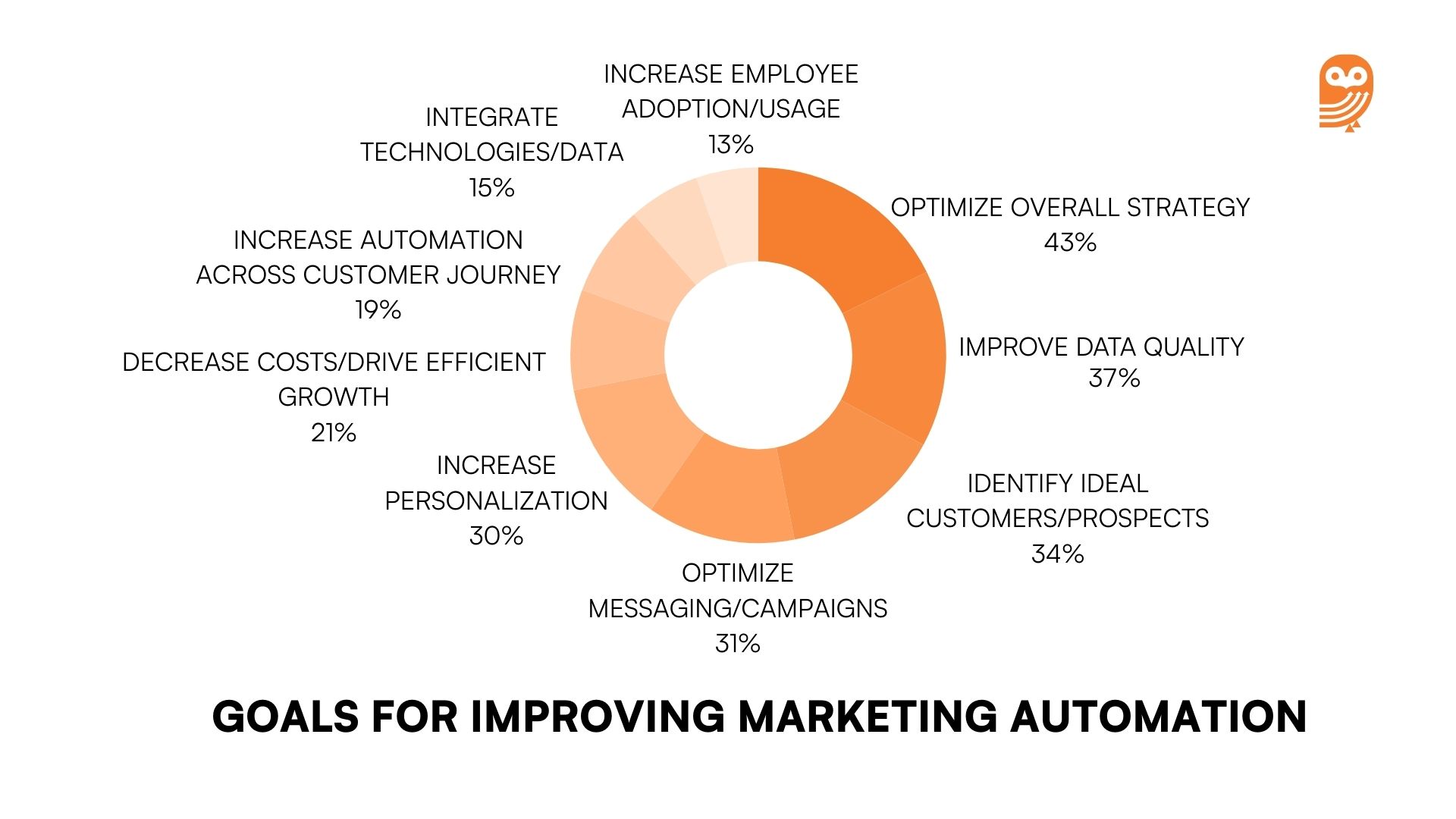
Source: Ascend2
Marketing Automation Future Stats
- 29% of marketers plan to add automation to their social media initiatives and paid advertising. – Ascend2
- Nearly 60% of marketers want to increase their budget in the coming year. – Ascend2
- 80% of professionals are confident in the metrics they currently use to gauge marketing performance. – Ascend2
- 48% of email marketers hope to increase automation in the next 12 months. MarketingCharts
Marketing Automation Success Stats
- Metrics used to measure the benefits of marketing automation:
- Customers acquired (52%) – MarketingCharts
- Sales accepted leads (29%) – MarketingCharts
- Marketing qualified leads [MQLs] (28%) – MarketingCharts
- Cost-per-lead generated (14%) – MarketingCharts
- Open click rates (6%) – MarketingCharts
- Improved targeting of messaging is considered to be the main benefit of marketing automation by 60.4% of marketers. – Liana
- Other benefits of marketing automation are:
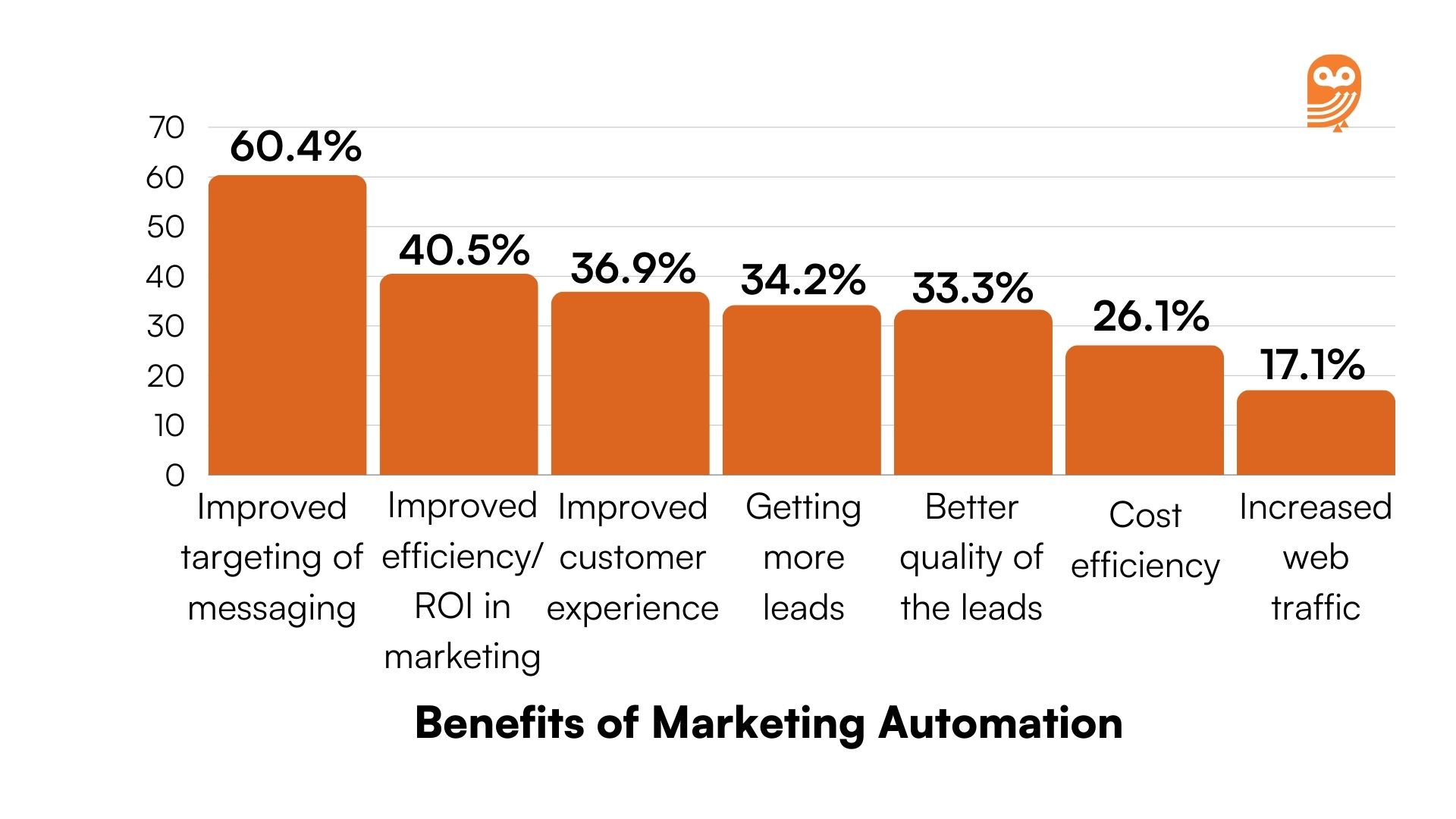
Source: Liana
Marketing Automation Challenges Stats
- For 49% of marketers, alignment between marketing and sales is still an issue. – MarketingCharts
- Challenges faced by marketers:
- Improving the quality of lead generation (49%) – MarketingCharts
- Improving campaign effectiveness (45%) – MarketingCharts
- Improving marketing-related metrics (31%) – MarketingCharts
- Marketing attribution (23%) – MarketingCharts
- Data governance (17%) – MarketingCharts
- Data systems centralization (16%) – MarketingCharts
- 39% of marketers report a lack of training or knowledge as the biggest barrier to bringing automation tools into an established marketing system. – MarketingCharts
- Challenges of Marketing Automation
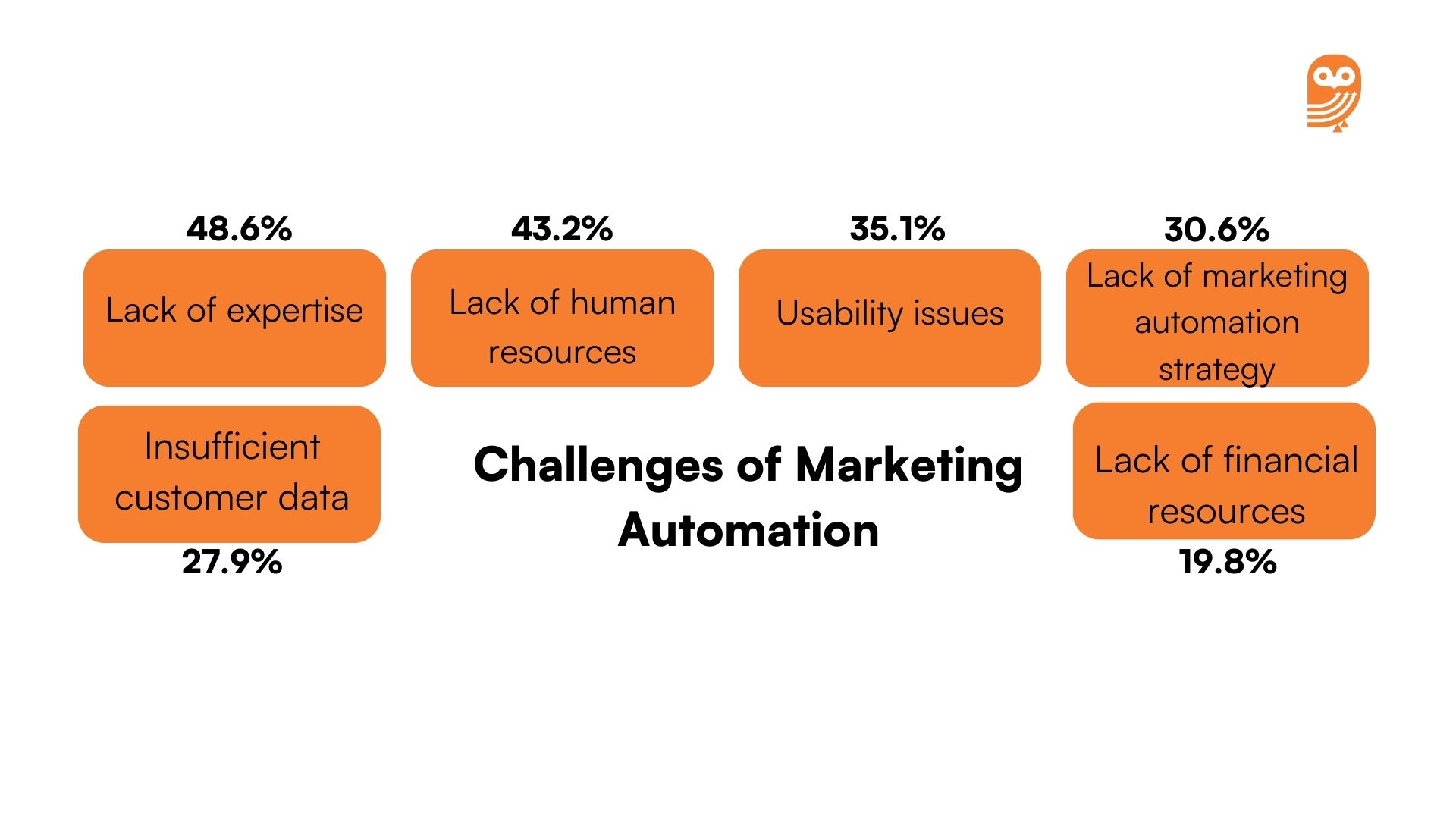
Source: Liana
Marketing Automation Success Metrics Stats
- 46% of marketers who use automation are likely to have an effective marketing strategy. – Hubspot
- 51% of CMOs agree that investing in marketing automation has increased accountability across sales and marketing teams. – MarketingCharts
- 47% of marketers say that automation helps move leads from marketing to sales faster. – MarketingCharts
- 63% of marketers agree that email is the most automated marketing channel followed by social media management with 50% of marketers using automation. – Ascend2
- Automated emails achieve higher open rates (84%), higher click rates (341%), and an increase in conversion rates (2270%). – Omnisend
Key Takeaways
- Efficiency and Productivity: Marketing automation streamlines repetitive tasks, allowing companies to focus on creative and strategic initiatives, significantly increasing sales productivity.
- Market Growth: The global marketing automation market is projected to reach $13.71 million by 2030, growing at a CAGR of 12.9%.
- Leading Platform: HubSpot leads the marketing automation software market with a 37.5% share.
- High Adoption Rates: 76% of businesses use marketing automation, with 91% reporting increased demand for automation tools over the last two years.
- Email Marketing Effectiveness: Automation is the 3rd most effective email marketing strategy, with automated emails achieving higher open rates (84%), click rates (341%), and conversion rates (2270%).
- Improved Targeting and Efficiency: 60.4% of marketers cite improved targeting as a major benefit of marketing automation, alongside enhanced efficiency and ROI.
- Challenges: Common challenges include alignment between marketing and sales (49%), improving lead quality, and the need for better training and resources to fully leverage automation tools.
FAQs on Marketing Automation
- Improved targeting
- Improved efficiency/ROI in marketing
- Cost efficiency
- Better quality of leads
- Improved customer experience
- Lack of expertise
- Lack of human resources
- Usability issues
- Lack of marketing automation strategy
- Insufficient customer data
- Lack of financial resources
Automated email boosts higher click rates, higher open rates, and conversion rates
Email marketing is the most automated marketing channel followed by social media management
- Underestimating the competition: Failing to accurately assess competitors’ strengths and strategies can leave you vulnerable to unexpected challenges in the market.
- Lack of alignment within the organization: Misalignment among departments on the GTM strategy can create internal confusion and dilute your market impact.
- Undefined target audience: Without a clear target audience, your marketing efforts can scatter, failing to connect deeply with any particular group.

